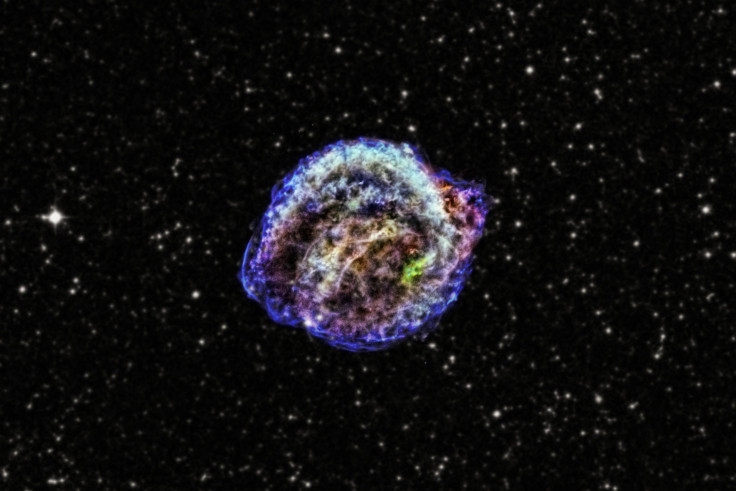Illusive Bright Supernova Magnified By Galactic Gravitational Lens: Study

A team of researchers reported an extremely bright supernova in 2013, which, according to them, got its intense glow from the strong gravitational lensing effect of a nearby galaxy.
The researchers said in a study that the newly found supernova, called PS1-10afx, was a Type Ia supernova (SNIa), which can be used to make a direct measurement of the universe's rate of expansion when seen through gravitational lenses.
“The team that discovered it proposed that it was a new type of supernova, one that no theory predicted,” Robert Quimby of the University of Tokyo’s Kavli Institute for Physics and Mathematics of the Universe and the study’s lead author, told the American Association for the Advancement of Science, or AAAS. “It evolved too fast, its host galaxy is too big, and it was way, way too red.”
According to an AAAS report, the galaxy's gravity could bend light from PS1-10afx in the same way that a glass lens focuses light. When the bend directs that light toward Earth, the supernova appears super-luminous.
The PS1-10afx supernova, which was found in 2010, demonstrated the same color and light curve as a SNIa supernova, but its peak brightness was 30 times greater than expected. This anomaly led some to conclude that it was a completely new type of “superluminous” supernova.
Quimby and his team of researchers thought that if there was a gravitational lens there to magnify the supernova, it would still be there after the supernova faded away. In September 2013, Quimby's team of researchers used the 10 meter Keck-I telescope located in Hawaii and collected light at the location of PS1-10afx.
“After carefully extracting the signal from the data, we had confirmation.” Anupreeta More, an astronomer at Kavli, said in a statement. “Buried in the glare of the relatively bright host galaxy, we found a second, foreground galaxy… our analysis showed that it was still the right size to explain the gravitational lensing of PS1-10afx.”
According to researchers, the strong gravitational lensing created “multiple images of the supernova” to give it an extra-bright appearance. Although the glow of PS1-10afx faded away before researchers could detect each of those images, the strong lensing effect offered a way to measure cosmic expansion.
“Each image comes from the same source but travels a different path length on its way to the observer, so there is an arrival time difference between these multiple supernova images. If this “time delay” can be measured, a direct test of cosmic expansion is possible,” researchers said.
© Copyright IBTimes 2024. All rights reserved.






















